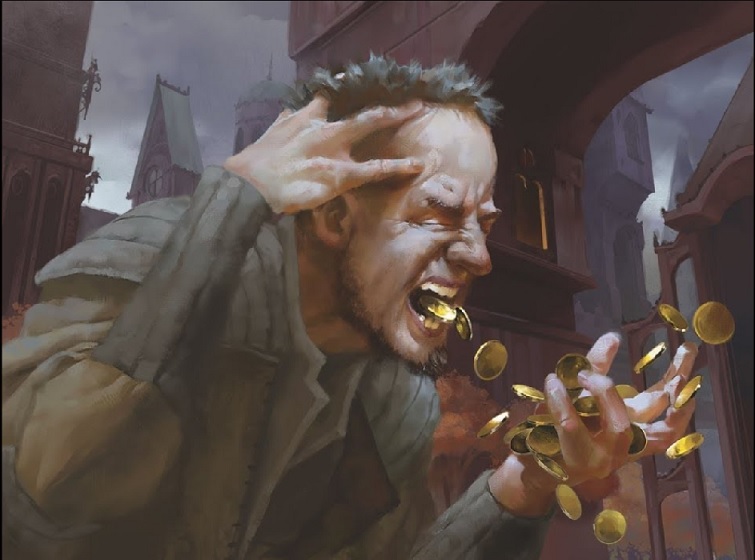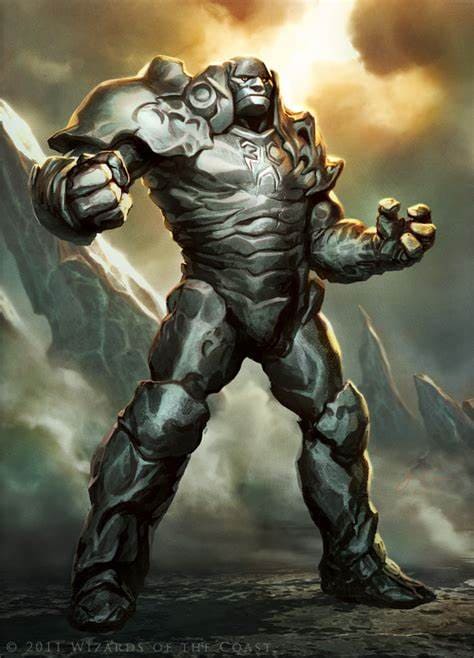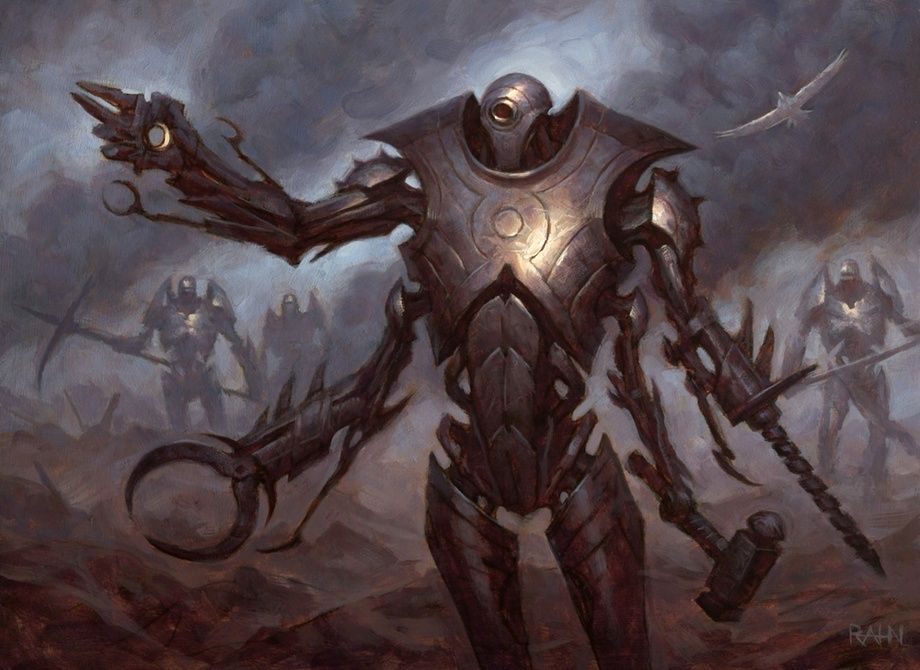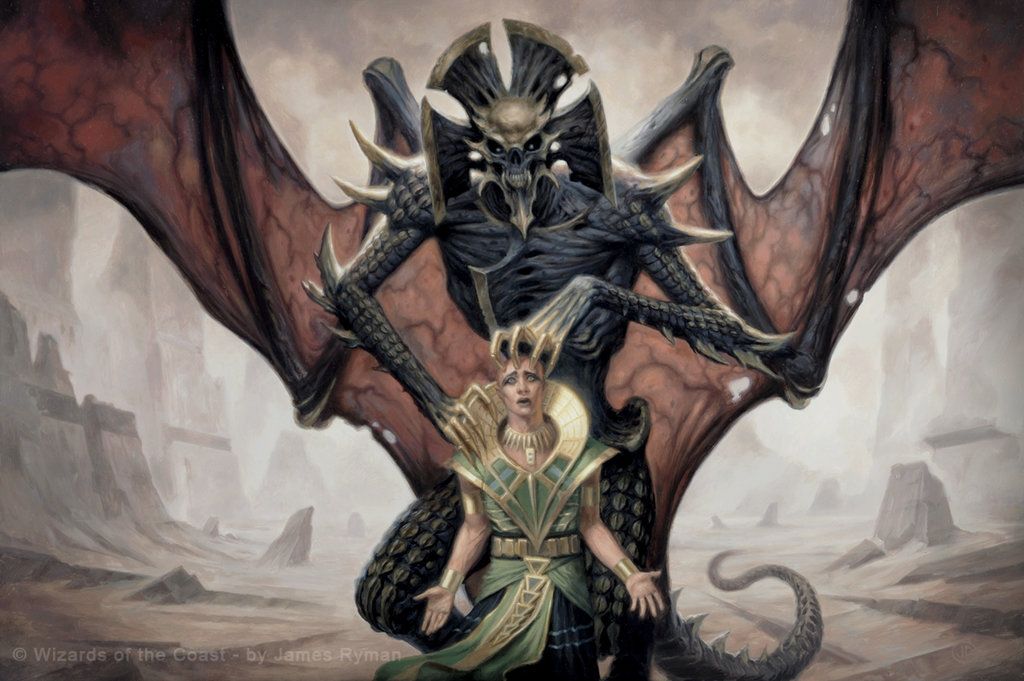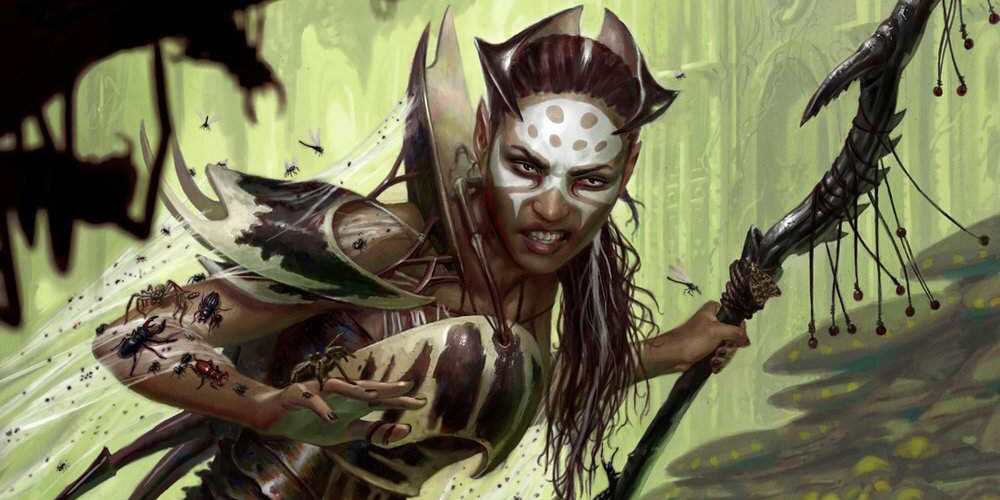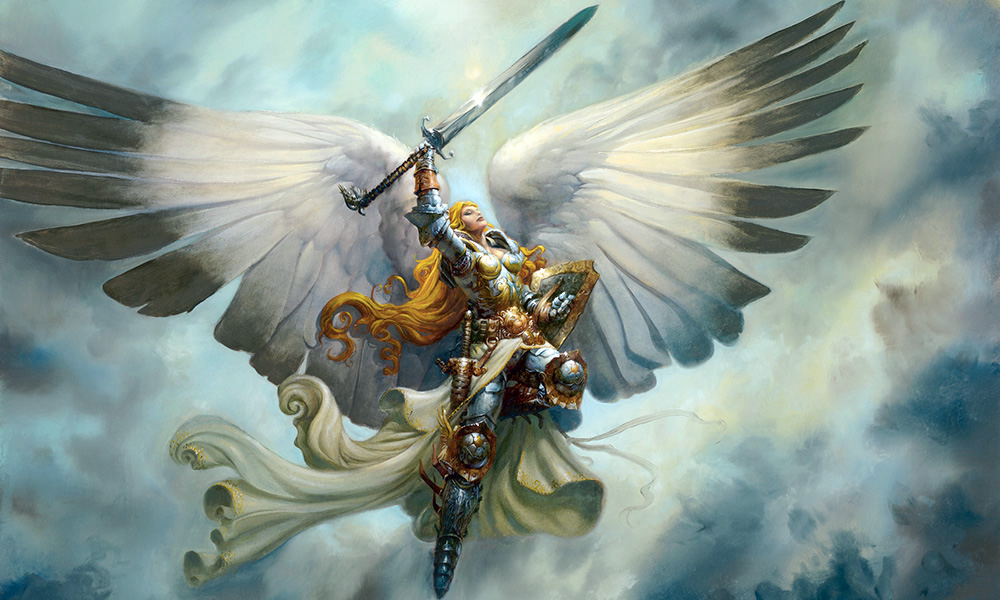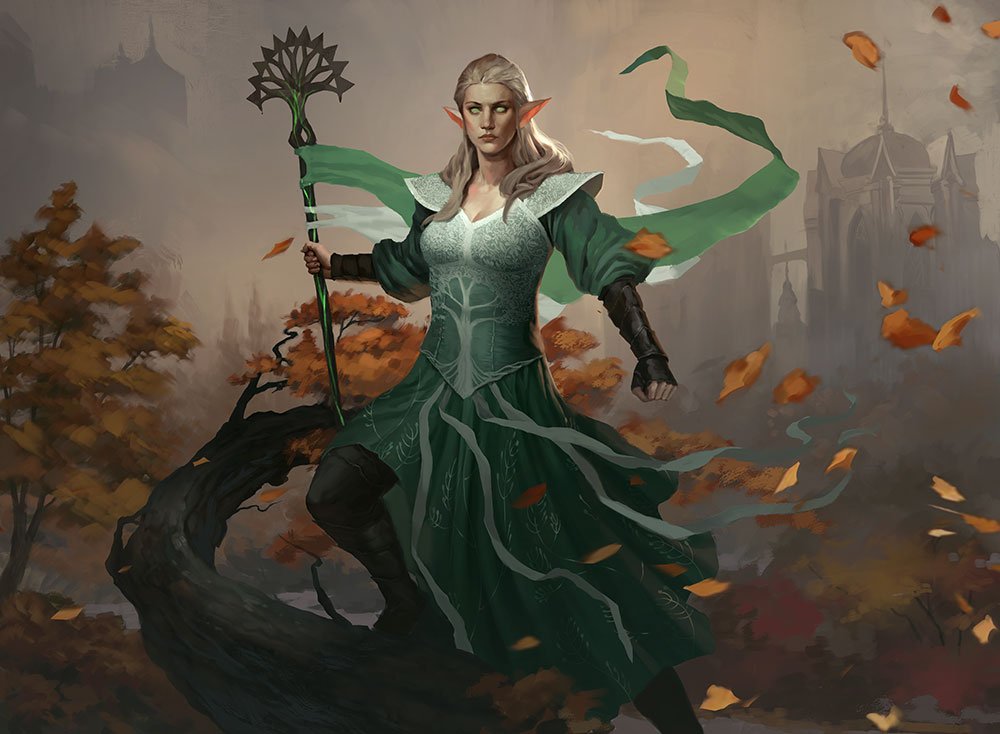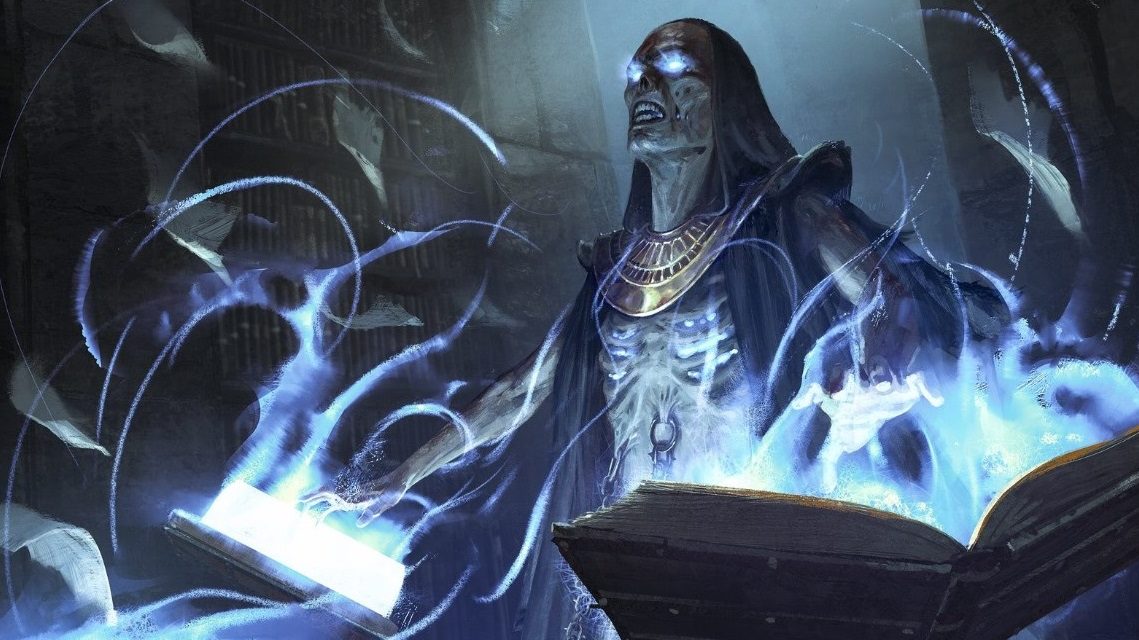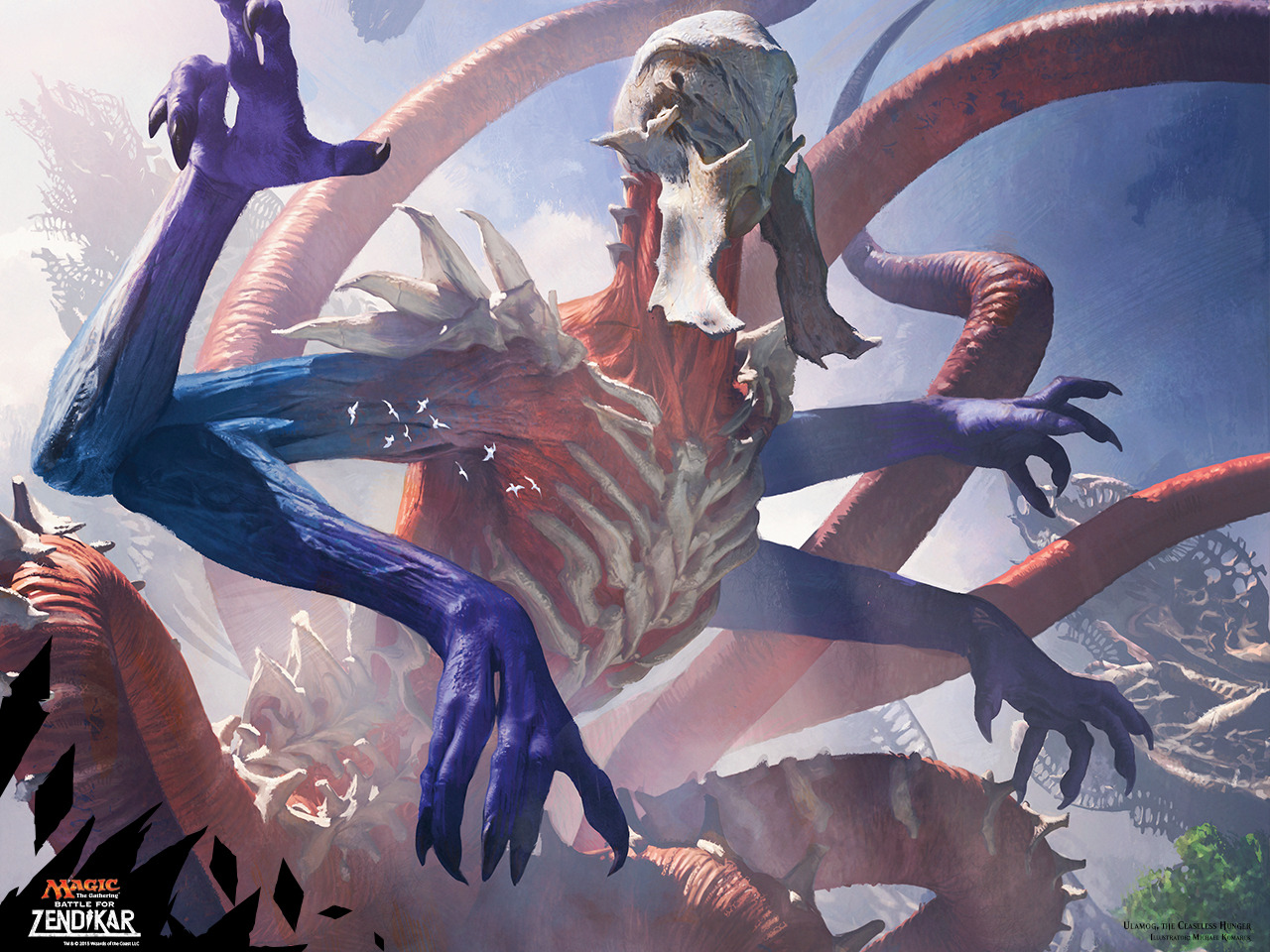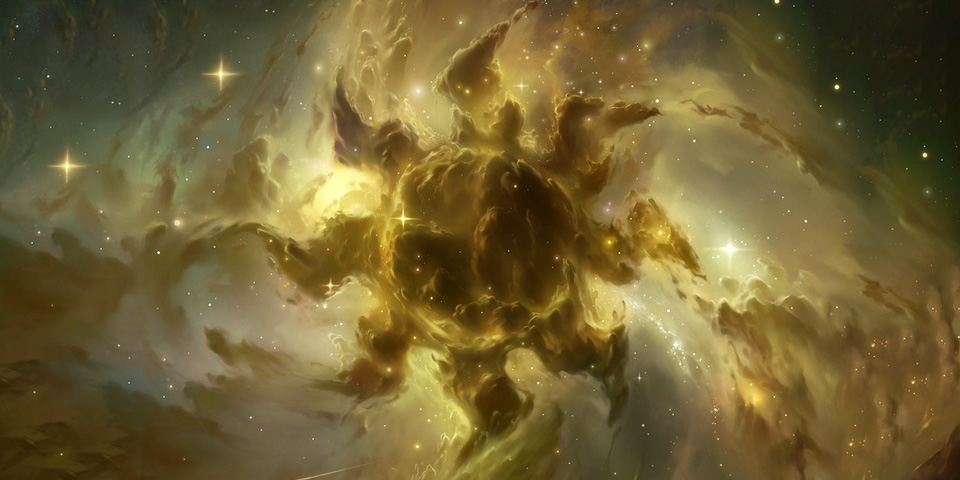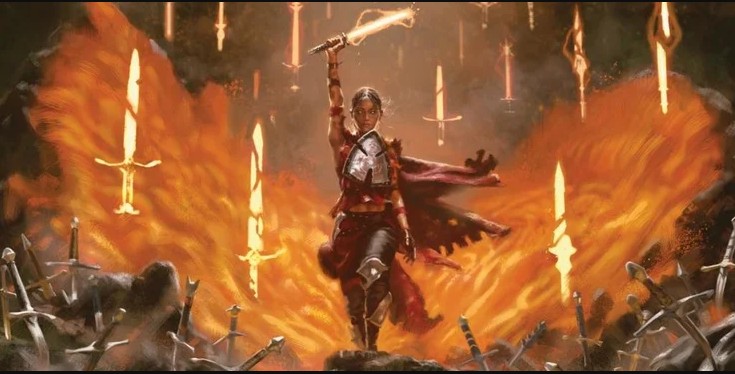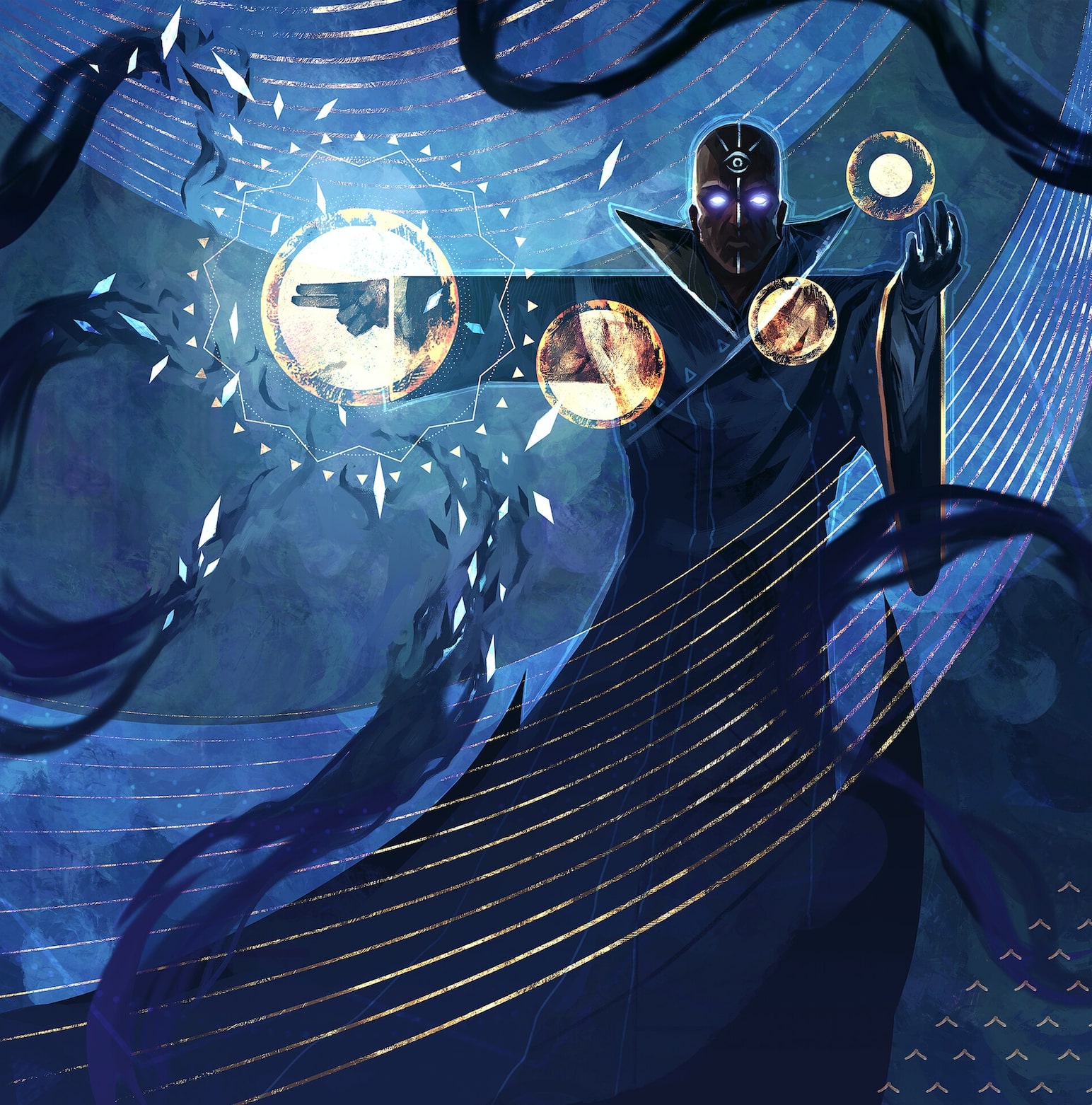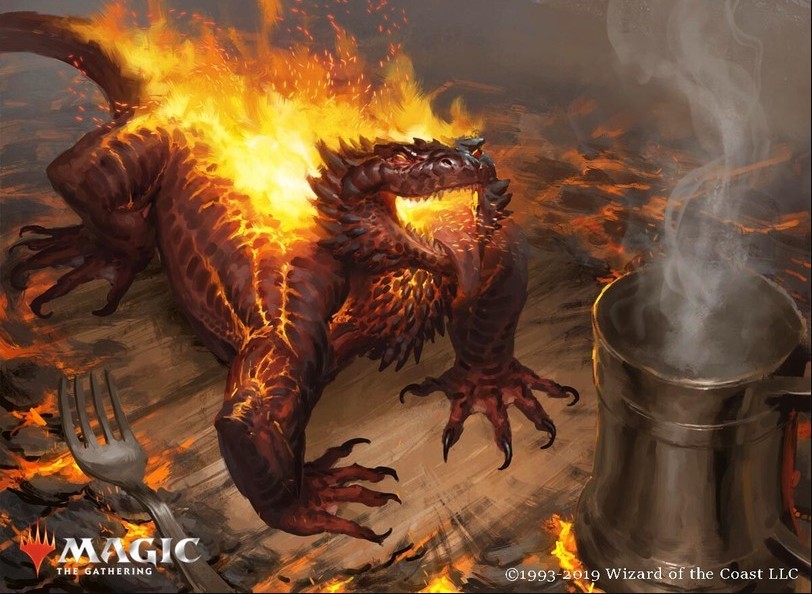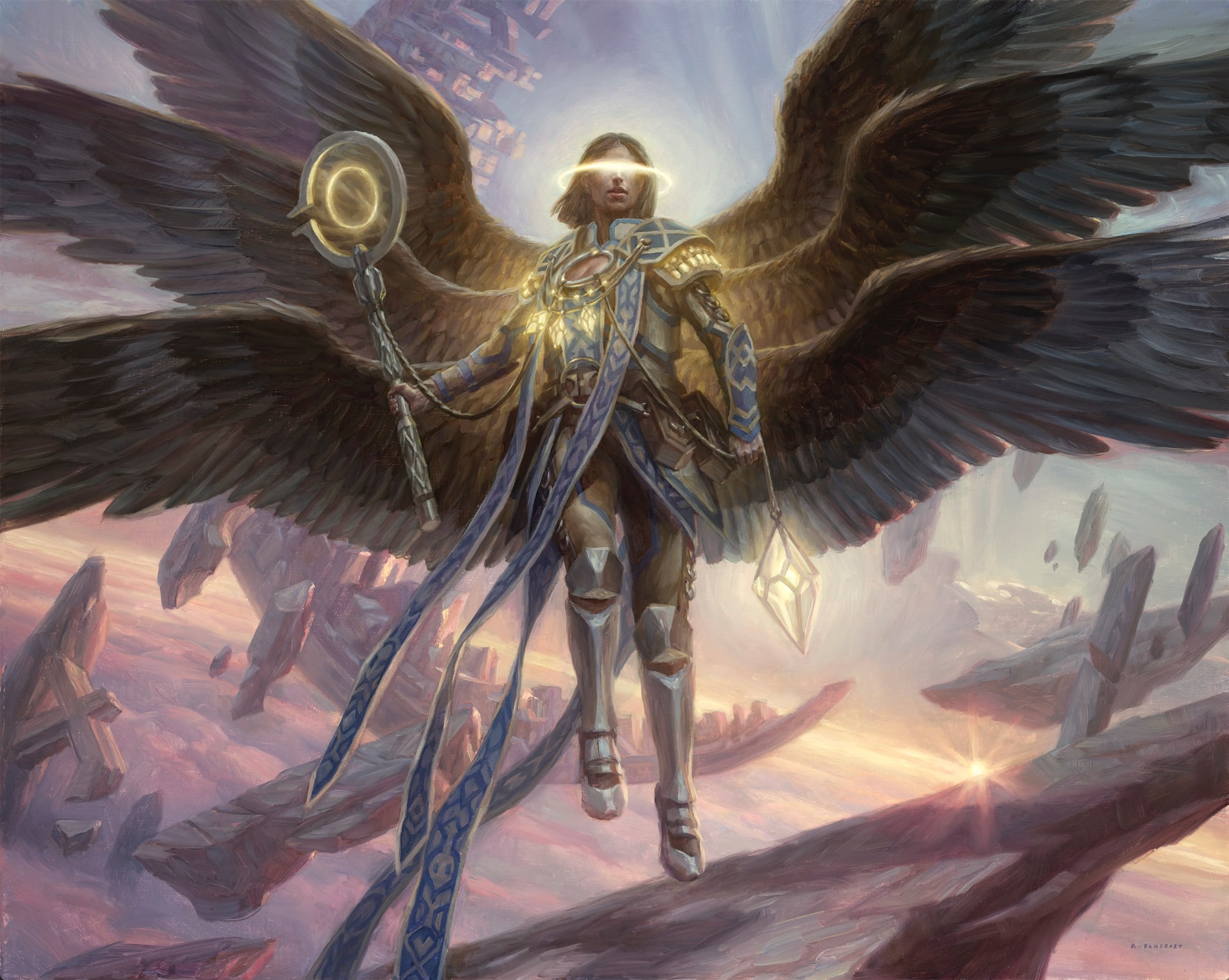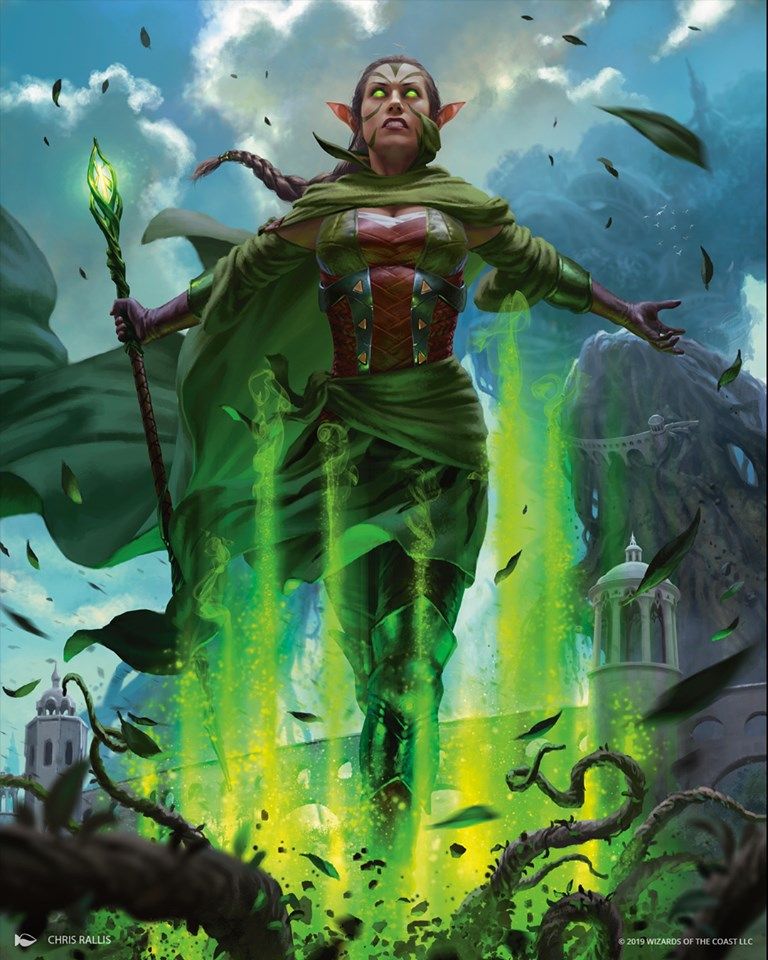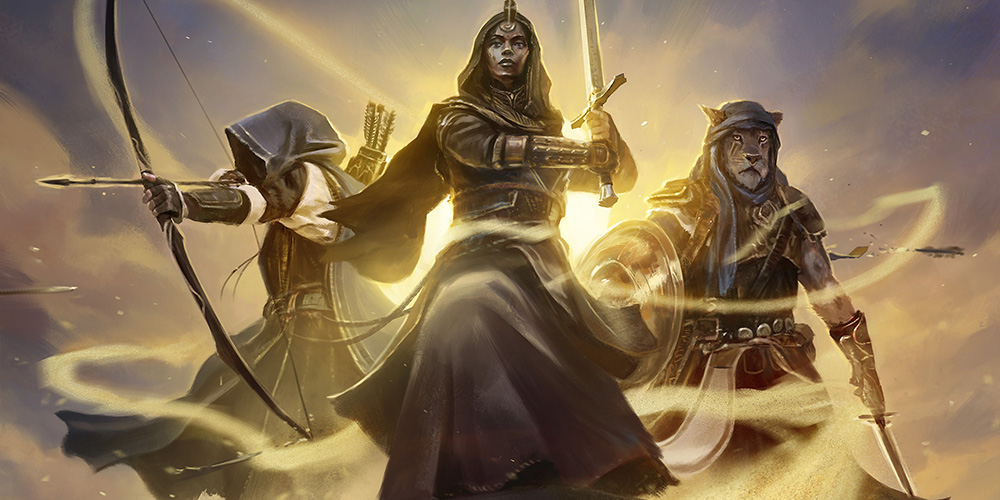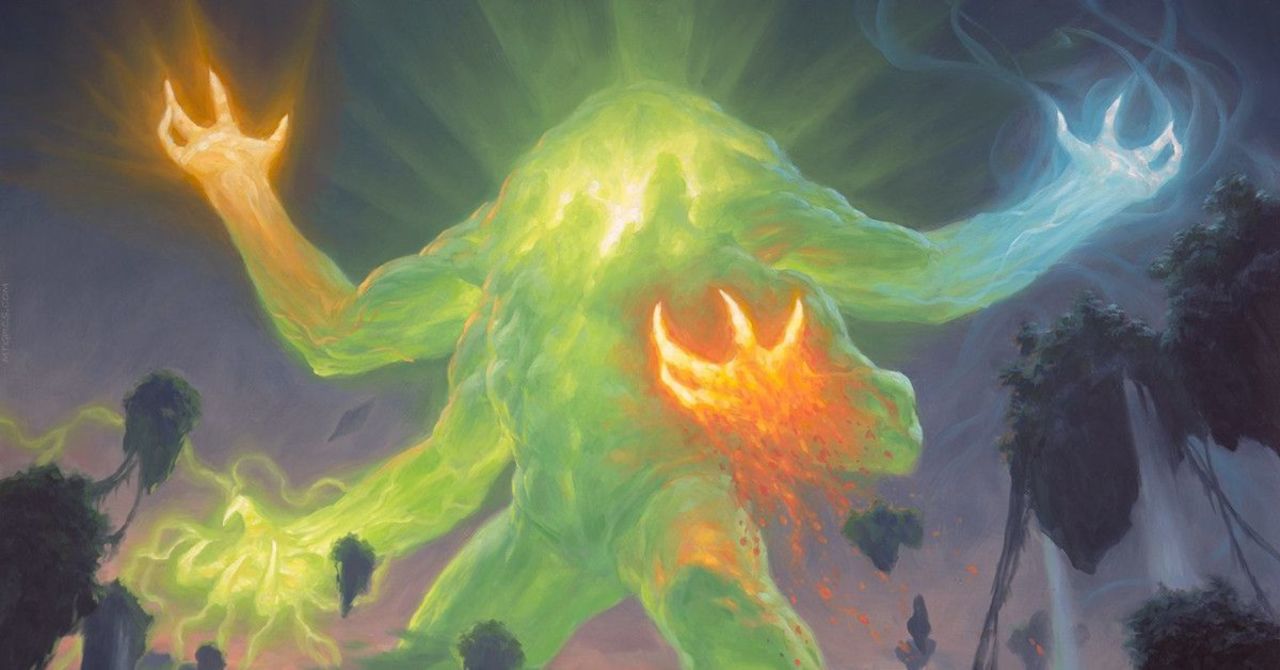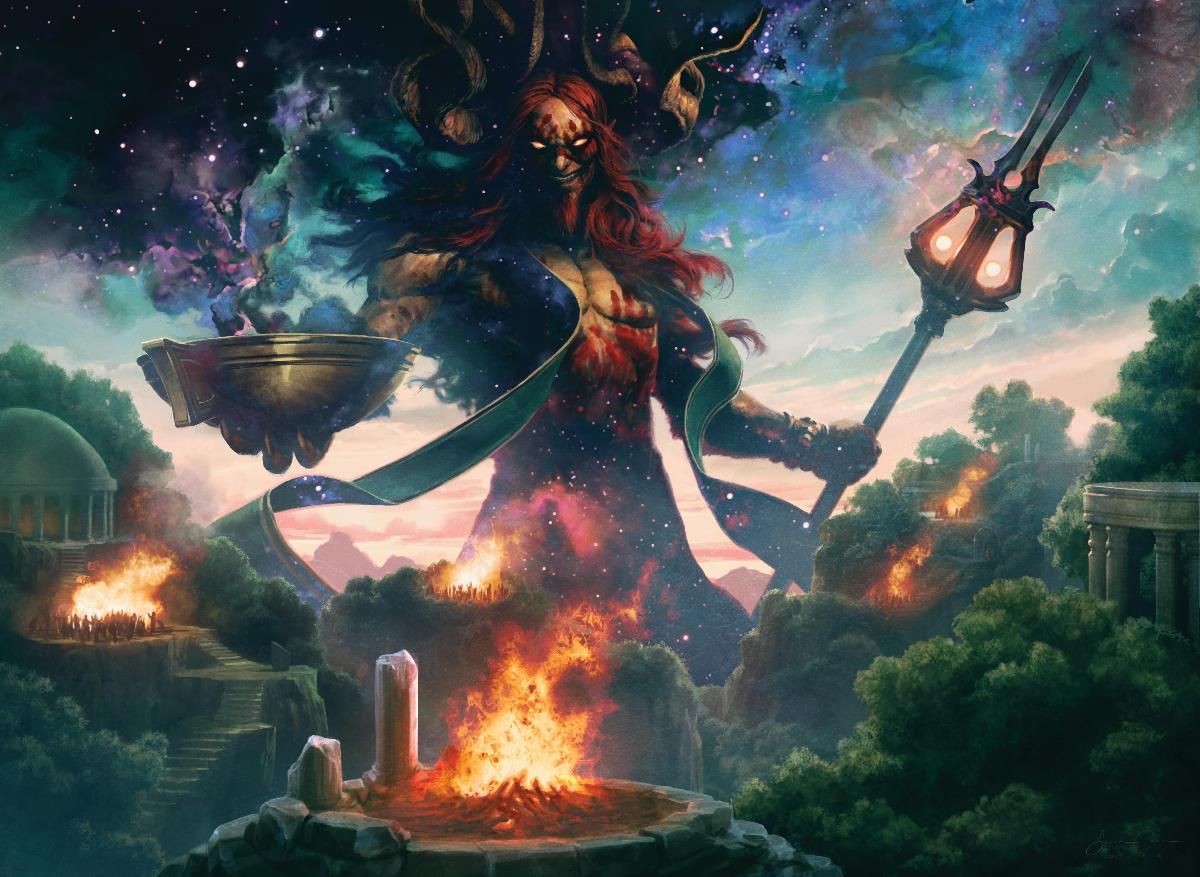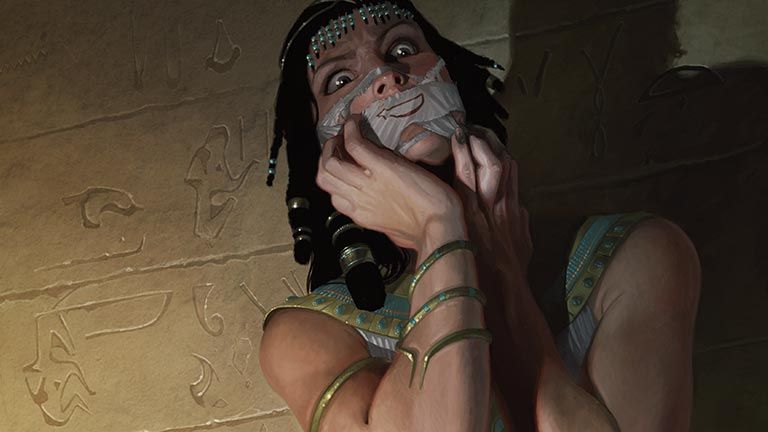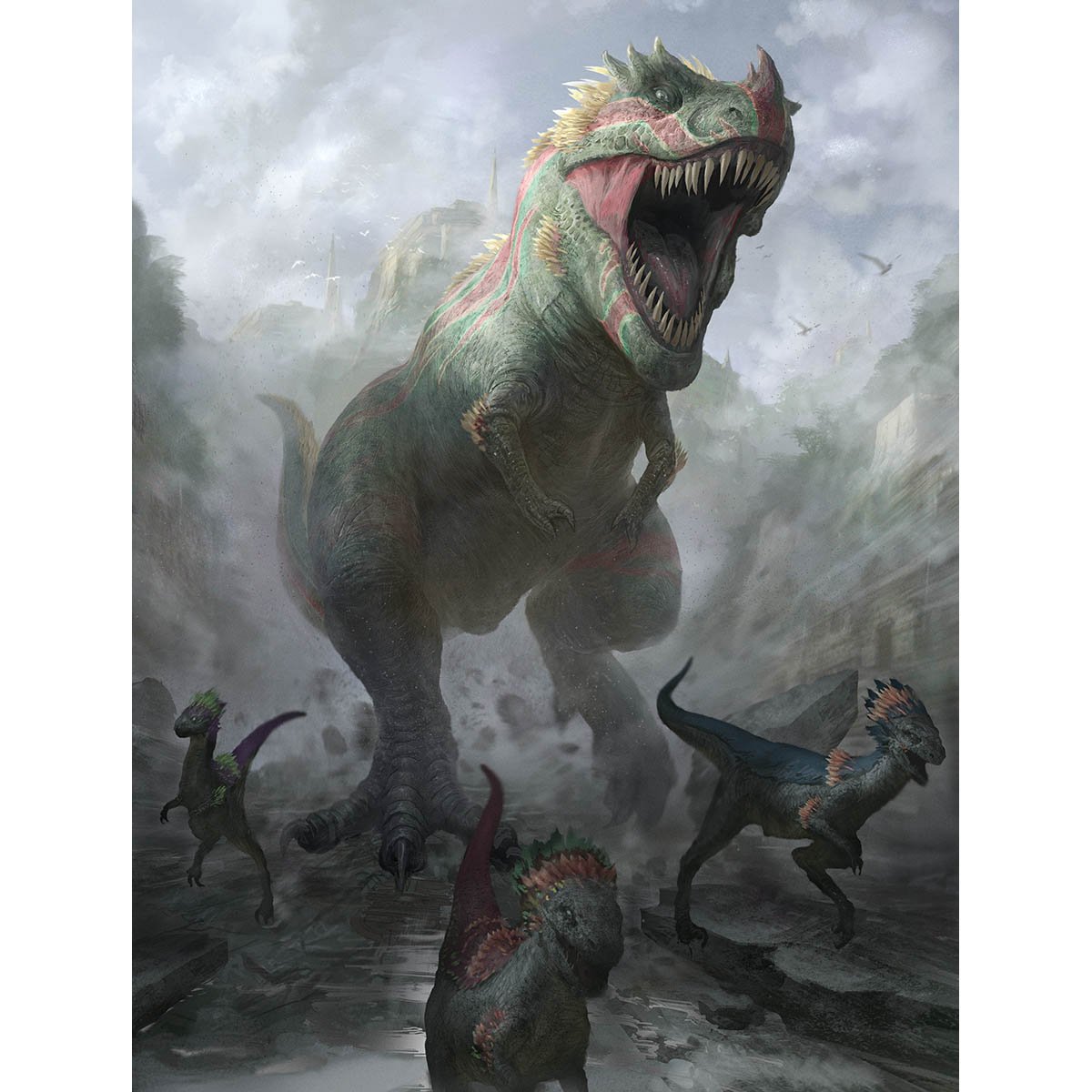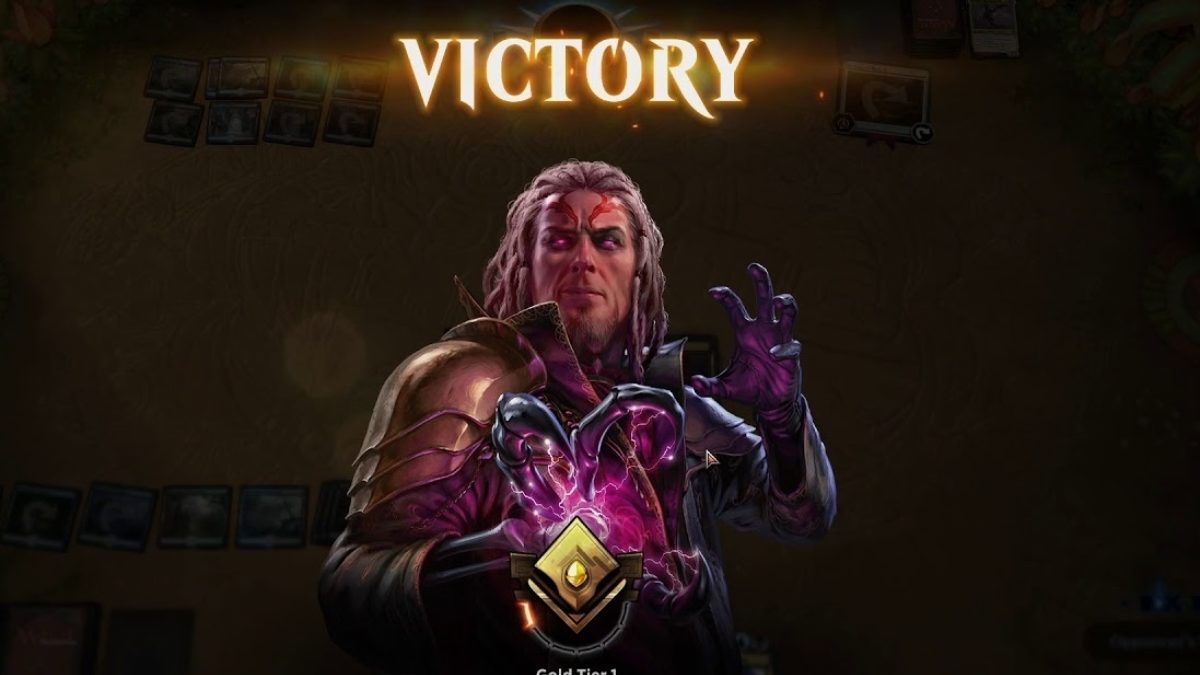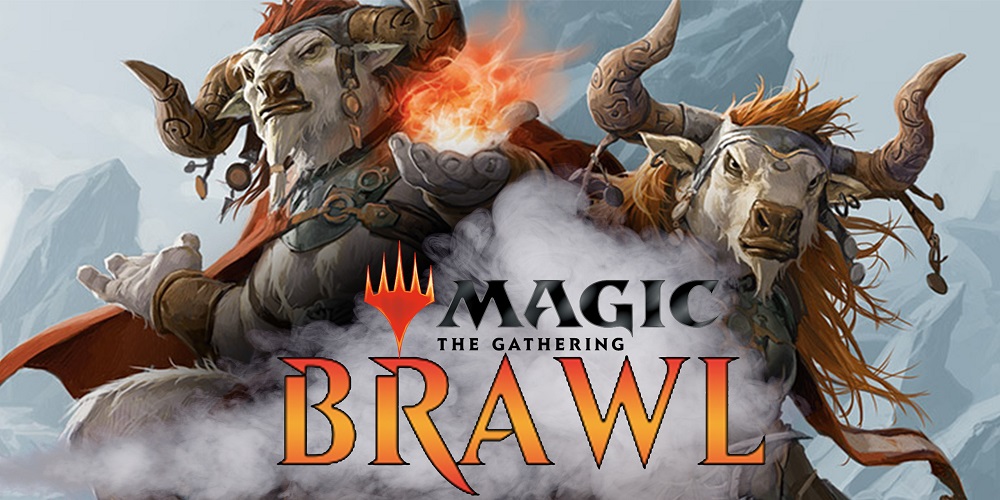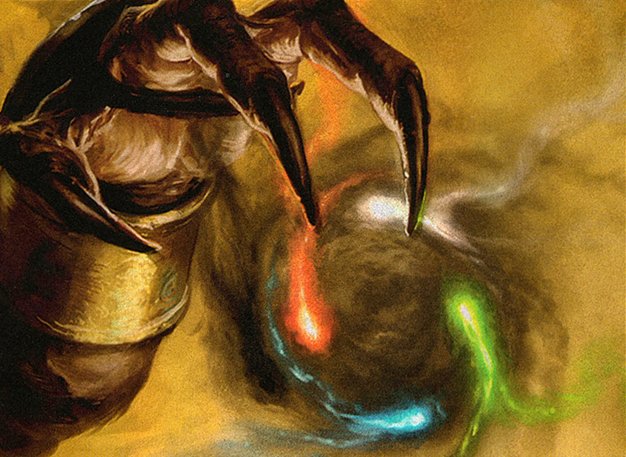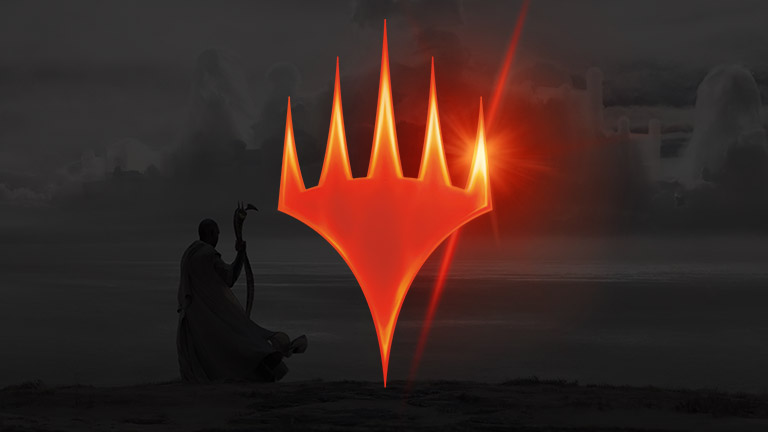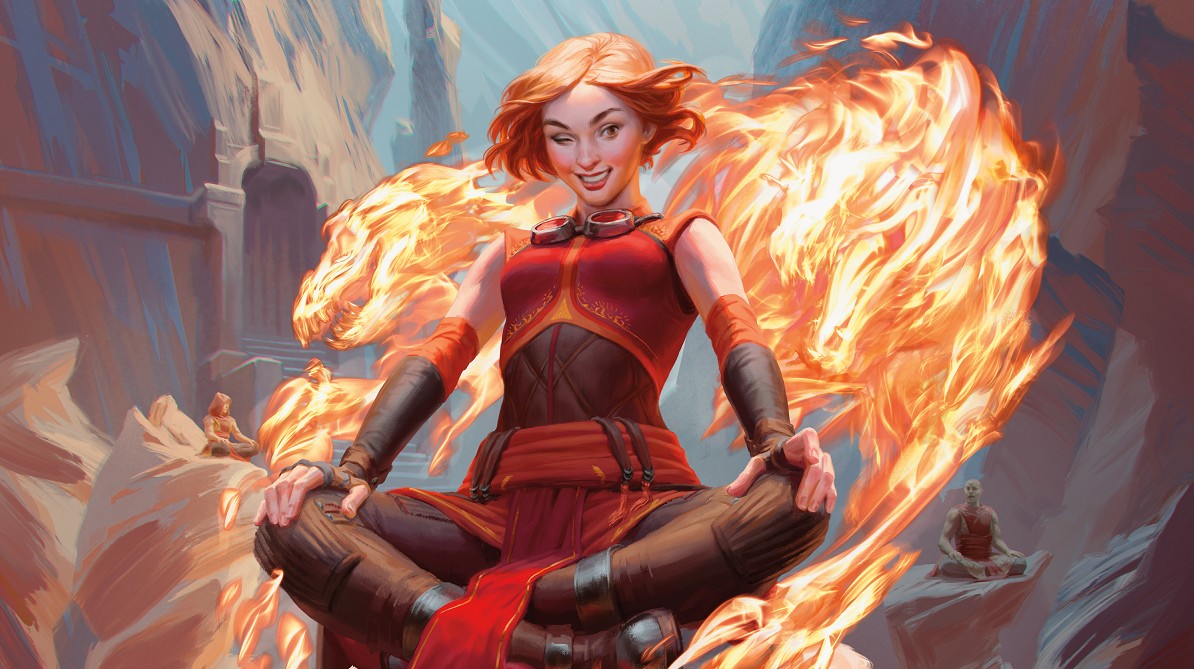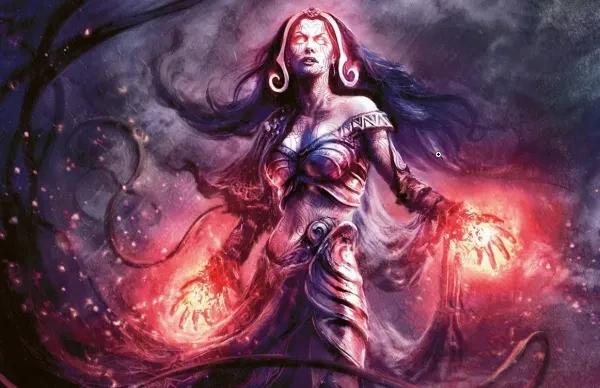
Core Set 2020 is live on MTG: Arena! That means 260 exciting new cards to crack open and craft, to build and brew with.
Even though the new set just came out, it’s already making a big splash in the meta! Exactly how big?
Let’s find out by taking a look at the top 11 best MTG: Arena Decks this July.
11. Mono Green Stompy
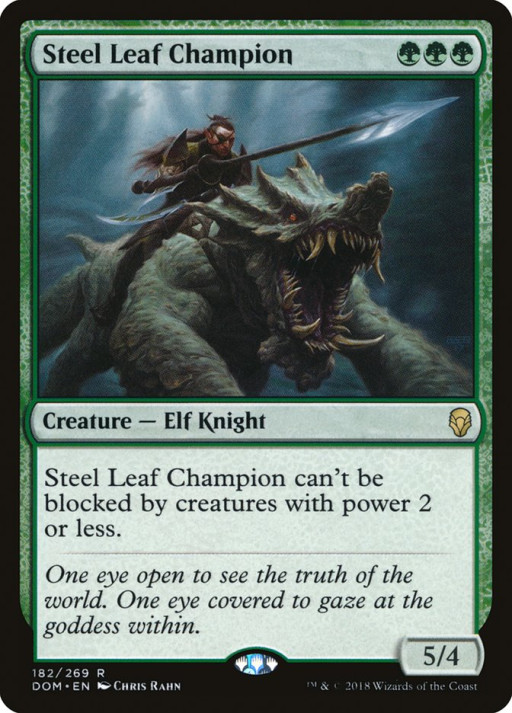
Since the dawn of Magic as a card game, Mono Green aggro decks have had one main philosophy to live or to die on: big creatures fast.
Between the generous tools given to the color within Dominara, the Ixalan block, and War of the Spark, the game hasn’t offered a better opportunity to ramp up mana and stampede over opponents in a long time.
What’s good about this deck:
- It’s cheap to build
- It’s very easy to play
- It’s not in any danger of rotating out
- Playing huge creatures is just plain fun
- The mana base is incredibly simple
Why this deck is OP:
- Stompy decks don’t cheat mana like many of the other colors do, they ramp it, which means your resources are much more permanent.
- Stompy runs a broader selection of creatures than most other decks, often opting for 2 or 3 copies of many cards rather than a full 4. This versatility sacrifices a little bit of consistency in order to have a broad set of answers.
- You get to play Steel Leaf Champion on turn 2. Just look at that guy, he’s a beast!
How To Play This Deck Effectively:
- Mulligan your starting hand if you don’t have at least 3 lands and at least 1 turn one play.
- Your goal is to flood the board with as many creatures as you can as quickly as you can.
- Use your deck’s Explore triggers to your advantage: whether you reveal a land or not, you’re profiting.
- Attack hard and attack often. Many new players will wait and build their forces before unleashing attacks, but the sooner you start swinging, the sooner your opponent goes down.
- Make the most of your bombs: Ghalta, Primal Hunger and God-Eternal Rhonas both make for devastating game-enders that can turn a close game into a curbstomp.
Decklist:
- 4x Llanowar Elves
- 4x Pelt Collector
- 4x Kraul Harpooner
- 4x Merfolk Branchwalker
- 2x Paradise Druid
- 3x Jadelight Ranger
- 4x Steel Leaf Champion
- 1x Wayward Swordtooth
- 4x Nullhide Ferox
- 1x Ripjaw Raptor
- 2x God-Eternal Rhonas
- 4x Ghalta, Primal Hunger
- 23x Forest
10. Temur Elementals
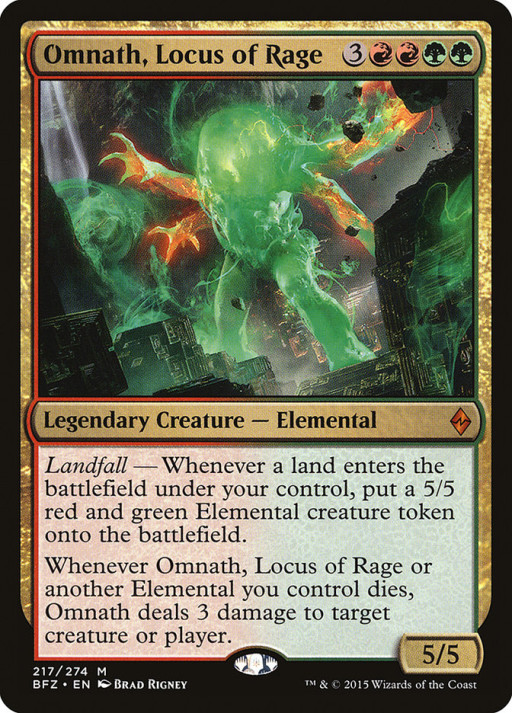
Tribal decks aren’t often competitively viable, but with the release of Core Set 2020, a fairly powerful URG elementals deck was given form.
This deck is similar to Stompy in its goals, but it splashes red and blue for the new beast of a legendary creature, Omnath, Locus of the Roil, as well as to give solid sideboard control answers to most threats.
What's good about this deck:
- It’s a midrange deck, meaning that it shines in its best-of-three adaptability.
- Ramping out big creatures is easy game for Elementals.
- It’s relatively easy to pick up and play.
- Most of the cards are either evergreen (constantly reprinted) or brand new, so rotation is not a concern.
- The deck offers a number of serious threats, meaning there are multiple paths to victory.
Why this deck is OP:
- Nissa, Who Shakes the World turns your lands into elementals so your board is never empty.
- Omnath, Locus of the Roil’s enter the battlefield damage trigger counts Nissa’s living lands as elementals, so you’re bound to do a ton of damage with him on entry.
- They may not be elementals, but the amount of mana ramp in this deck from Llanowar Elves and Leafkin Druid makes the inclusion of Hydroid Krasis an absolutely devastating one.
How To Play This Deck Effectively:
- Use the sideboard effectively. If your first game doesn’t go great, think about whether slotting in some straight up burn or countermagic might help keep your opponent’s boardstate in check.
- Don’t be afraid to play your bombs early if it looks like you can profit. Most of them, like Omnath and Hydroid, are not hard to cast at all, and you have playsets of them in your deck for a reason. Don’t hold them back!
- Don’t leave Nissa unprotected. Planeswalkers can be crucial to your victory, but they can be targeted much easier than creatures can. If you play Nissa, be sure to leave a way to defend her, or she won’t be doing you much good.
- Omnath’s second ability may not be as flashy as a bunch of damage to the face, but in this deck, it’s very consistent. Playing Omnath early enough can mean an extra +1/+1 counter on one of your creatures at least once a turn, and oftentimes more.
Decklist:
- 1x Shivan Fire
- 4x Llanowar Elves
- 4x Leafkin Druid
- 4x Merfolk Branchwalker
- 2x Wildgrowth Walker
- 4x Hydroid Krasis
- 4x Jadelight Ranger
- 4x Risen Reef
- 4x Omnath, Locus of the Roil
- 3x Cavalier of Thorns
- 3x Nissa, Who Shakes the World
- 2x Steam Vents
- 2x Sulfur Falls
- 4x Breeding Pool
- 3x Forest
- 4x Hinterland Harbor
- 4x Rootbound Crag
- 4x Stomping Ground
Sideboard:
- 3x Shivan Fire
- 2x Veil of Summer
- 2x Aether Gust
- 4x Negate
- 2x Lava Coil
- 2x Thrashing Brontodon
9. Izzet Phoenix
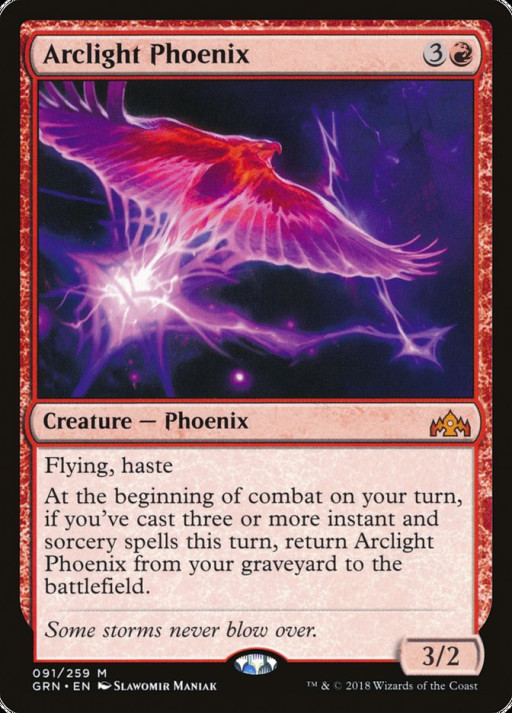
Blue/Red spell slinging decks have been a huge threat in the Modern format for ages. Last October, Guilds of Ravnica gave us the key pieces to form the backbone of one of these decks for standard: Arclight Phoenix and Crackling Drake.
Recent sets have given us powerhouse supporting cards like Saheeli, Sublime Artificer and Finale of Promise to help take this deck from great to overpowered.
What's good about this deck:
- The pacing is very fast. Lots of this deck’s plays are very cheap, so you can often do multiple things each turn.
- The construction of the deck is highly synergistic, so every card you draw builds upon every other card in the deck. As long as you’ve got the mana, there’s really no such thing as bad draw.
- This deck has lots of Instants, meaning you’ve always got the opportunity to take priority and maximize your mana efficiency.
- All of your creatures and planeswalkers care about your spells, so go wild and cast as many as you can!
- The sideboard gives this deck alternative instant and sorcery options to keep up your spell slinging no matter what kind of threat you find yourself in need of countering.
Why this deck is OP:
- Crackling Drake may seem like a heavy mana investment, but his draw on entry effect keeps your hand fueled and his graveyard dependent strength means that, in an ideal scenario, you can have a 6 power flyer on turn 4!
- Arclight Phoenix’s return to the board clause is insane on a non-legendary 3/2 flyer with haste. In a best-case scenario, you can play three 1-mana instants (such as Shock) and haste into play a full playset of flying 3/2s ready to wreck shop from moment 1.
- Finale of Promise does ridiculous work in this deck in the late game. Remember: if you’ve got Saheeli on deck or Phoenixes in the graveyard, all of the ‘cast’ triggers from your Finale count! Better still, Crackling Drake’s power counts instants and sorceries in exile as well as the graveyard, so you’re not losing any power on your Drake at all by pilfering your yard.
How To Play This Deck Effectively:
- Never let your untap phase happen with untapped mana. The more mana you use, the more spells you’re casting. The more spells you’re casting, the closer you are to winning.
- Unless you’re trying to bring back an Arclight Phoenix, take advantage of your instants. Passing your turn with untapped mana leaves your opponent unsure of what you’re capable of, and you can always use your support and draw spells on your opponent's turn to burn your mana pool and refuel before your next untap phase.
- Drawing a Lightning Strike might be better for you than drawing an Opt a lot of the time, but your win condition is about casting spells, even if they’re not always the most tactical ones. Just throw ‘em out and rack up those cast triggers!
- If you discard an Arclight Phoenix with something like Tormenting Voice, you can get the Arclight Phoenix into the graveyard, and subsequently the board, without ever paying its mana cost!
- Niv-Mizzet, Parun may seem like a strange sideboard choice for this deck. After all, he’s big, clunky, and slow. However, he gives you ping damage and card advantage for every single instant and sorcery you OR YOUR OPPONENT casts, meaning that if you do manage to get him into play, get ready to hop into value town. He may only be really effective in slower matchups, but when he works, he devastates.
Deck:
- 4x Arclight Phoenix
- 3x Augur of Bolas
- 4x Crackling Drake
- 2x Anticipate
- 3x Lightning Strike
- 4x Opt
- 4x Shock
- 4x Chart a Course
- 2x Finale of Promise
- 2x Lava Coil
- 3x Shimmer of Possibility
- 3x Tormenting Voice
- 2x Saheeli, Sublime Artificer
- 4x Island
- 4x Mountain
- 4x Steam Vents
- 4x Sulfur Falls
- 4x Temple of Epiphany
Sideboard:
- 3x Aether Gust
- 2x Cerulean Drake
- 2x Flame Sweep
- 3x Fry
- 3x Negate
- 2x Niv-Mizzet, Parun
8. Grixis Control
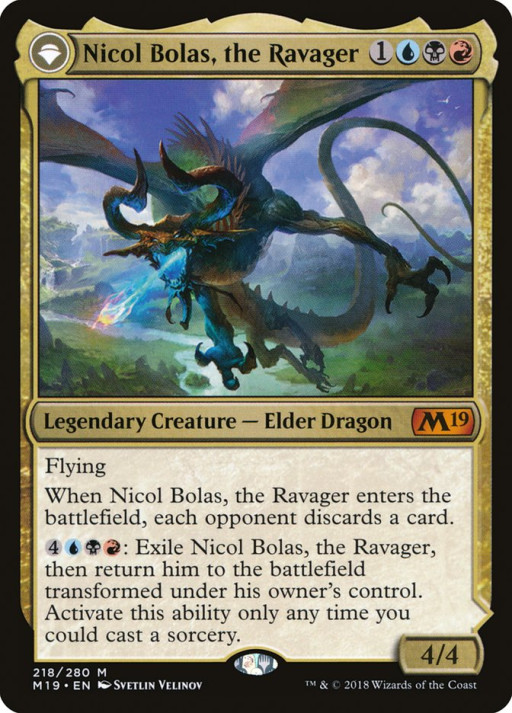
When control deck archetypes get new toys, it’s often a sign that dark days are on the horizon for aggro and midrange players. Last year’s Core Set 2019 gave us the incredibly abusable Nicol Bolas, the Ravager to act as the spearhead for a whole slew of Blue/Black/Red decks.
It wasn’t until May’s War of the Spark, however, that Grixis Control was given shape thanks to the incredibly value-packed “Amass” mechanic along with a ton of potent removal and game-restricting Planeswalkers.
What's good about this deck:
- The mana curve might be a bit steep, but control decks thrive on their ability to, well, control the board. Even with the high mana costs, you shouldn’t have any trouble getting your bombs on board.
- Removal is your friend! While you build your board slowly, you tear your opponent’s board down swiftly.
- The variety of planeswalkers in the deck give you a host of options for finishing your opponents off outside of The Ravager himself.
- Despite being a control deck and not a midrange, it’s got an expertly crafted sideboard to get you out of any hard counters you may run into in game 1.
Why this deck is OP:
- Why stop at 4 Nicol-Bolas when you can have 8? The Ravager might have given birth to this deck archetype, but War of the Spark’s Nicol Bolas, Dragon-God literally has an ability that says that you win the game. It’s no wonder this deck runs a playset of both!
- This deck may seem slow, but for a control deck it’s actually got an incredibly fast set of win-conditions. Once you’ve got the mana and your opponent’s resources have been sufficiently decimated, either Nicol-Bolas will finish your opponent off in no-time.
How To Play This Deck Effectively:
- Take your time! This is the deck of masterminds, and masterminds don’t rush into their plans.
- “Your life is a resource”. This is basically the mantra of Black in MTG, and in this deck, it rings more true than ever. The only lifepoint that matters is your last one, don’t lose your cool over a couple of your opponent’s creatures getting through!
- This is a three colored deck, but it’s primarily Black. Be sure to start the game with some Black mana in hand, or you’re going to have a rough time.
- Chandra, Acolyte of Flame is the best utility Planeswalker in this deck. Being able to boost Dragon-God closer to a victory twice per turn is great, and being able to call back old control spells or zap out an elemental ambush shouldn’t be taken lightly either.
- Dragon-God’s power to copy Planeswalker abilities means that you get to double up on any and all of the abilities of The Ravager’s transformed form: Nicol Bolas, the Arisen. Drawing 4 cards a turn or dropping any two creatures or walkers directly on board will win you the game long before you need to resort to either Nicol’s ultimate ability.
Decklist:
- 2x God-Eternal Kefnet
- 4x Nicol Bolas, the Ravager
- 3x Bedevil
- 1x Cast Down
- 1x Moment of Craving
- 1x Tyrant's Scorn
- 1x Command the Dreadhorde
- 1x Cry of the Carnarium
- 2x Enter the God-Eternals
- 3x Ritual of Soot
- 4x Thought Erasure
- 2x Discovery/Dispersal
- 2x Search for Azcanta
- 2x Chandra, Acolyte of Flame
- 2x Narset, Parter of Veils
- 4x Nicol Bolas, Dragon-God
- 3x Blood Crypt
- 4x Dragonskull Summit
- 4x Drowned Catacomb
- 4x Steam Vents
- 4x Sulfur Falls
- 2x Swamp
- 4x Watery Grave
Sideboard
- 1x Cry of the Carnarium
- 1x Disdainful Stroke
- 3x Duress
- 4x Legion Warboss
- 1x Negate
- 3x Noxious Grasp
- 1x Unmoored Ego
- 1x Vraska's Contempt
7. Bant Midrange
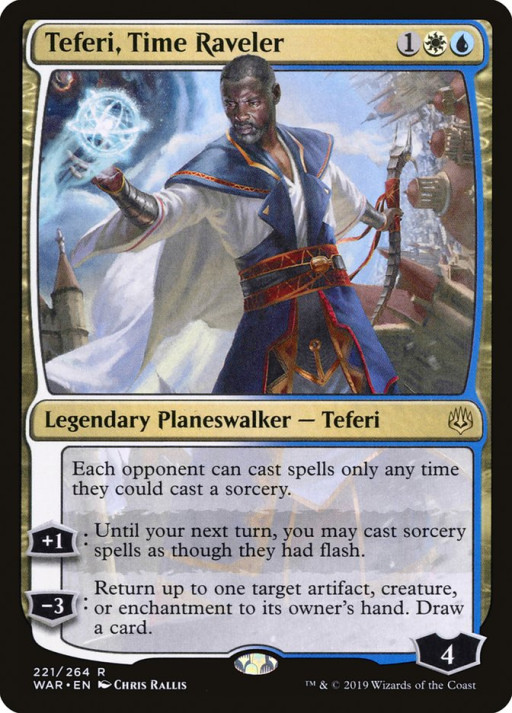
Remember that Temur Elementals deck a few entries up in this list? Bant Midrange is very similar, with one key difference: Instead of splashing Red for stronger removal and burn, this deck splashes white for some better board presence and to be able to play everyone’s favorite Planeswalker to hate: Teferi.
What's good about this deck:
- As with the other primarily Green decks on this list, Bant Midrange is pretty easy to pick up and play.
- Also like the other Green decks on this list, the mana ramp here is through the roof.
- Covering up for the lack of Red’s straight up burn, this deck taps into Prison Realm. Prison Realm’s a bit more mana-expensive, but the upside of a scry is typically worth the price.
- Teferi, Time Raveler. That is all.
- A playset of Hydroid Krasis never hurt a ramp deck either, did it?
Why this deck is OP:
- Unlike the other Green decks on this list, this deck gets access to Finale of Glory, a card that effectively reads “If X is 10 or more, you win the game”. There are very, very few ways that you’re going to bring 10 2/2s and 10 flying 4/4s onto the board in a turn and not immediately end the game when they can attack.
- Nissa, Who Shakes the World, also present in the green decks listed above, means that all of your ramping doesn’t leave your board empty.
- Okay, fine. Let’s talk about Teferi. His passive strips away instant speed from everything in your opponent’s deck, meaning there’s no reacting to anything you do when Teferi is onboard. On top of this, his +1 effectively reads “All sorceries have flash all the time.” He totally shifts the timing of the game to your favor, and it’s not always fun to play against. NOW that is all.
How To Play This Deck Effectively:
- Instead of holding a swiss-army knife’s worth of alternate options, the sideboard in this deck serves one very fine-tuned purpose: Control.
- In its default form, this deck is about ramping out big spells, a lot like Stompy, but when someone seems to be playing with countermagic and removal, use the sideboard to crank this deck’s control elements up to 10.
- Don’t worry much about holding things in hand for long. You’ve got extra Planeswalkers and Hydroids, so if you don’t play them for optimal value, you don’t lose your only chance if you just need the board presence in the early-game.
- It may seem like an insanely high mana cost, and that’s because it is, but if you’re sitting on enough mana to bring out a game-ending Krasis or Finale of Glory, the Mass Manipulations in this deck’s sideboard offer a slightly more Blue option for a game-ending mana sink. It’s roughly as good as either other option when your mana ramps sky-high, but stealing opponent’s stuff is just more satisfying sometimes.
Decklist:
- 4 Llanowar Elves
- 4 Paradise Druid
- 4 Leafkin Druid
- 4 Risen Reef
- 3 Cavalier of Thorns
- 4 Hydroid Krasis
- 2 Finale of Glory
- 2 Prison Realm
- 4 Teferi, Time Raveler
- 4 Nissa, Who Shakes the World
- 5 Forest
- 4 Breeding Pool
- 4 Hinterland Harbor
- 4 Temple Garden
- 2 Sunpetal Grove
- 4 Hallowed Fountain
- 2 Glacial Fortress
Sideboard:
- 4 Negate
- 2 Mass Manipulation
- 3 Baffling End
- 1 Prison Realm
- 2 Ixalan's Binding
- 2 Shifting Ceratops
- 1 Time Wipe
6. Esper Midrange
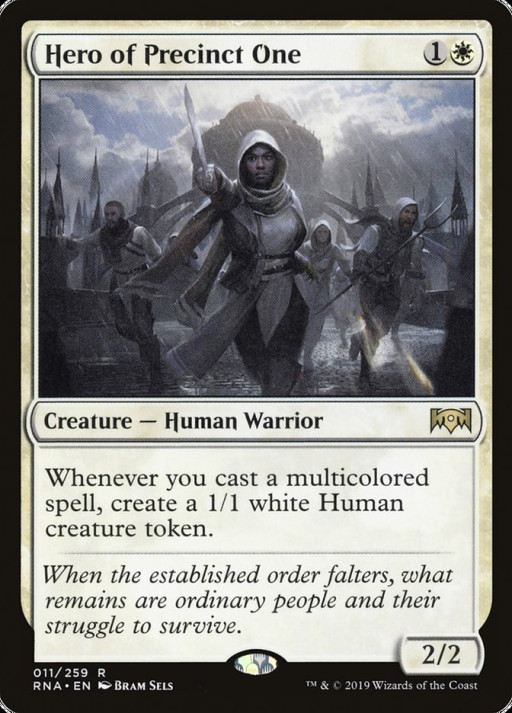
White/Blue/Black. Esper is perhaps the most powerful three-color combination in Magic. It’s certainly the most controlling.
What happens when you combine a 2 mana creature that spawns tokens for every multicolored spell you cast with a full playset of both Teferi, Time Raveler and Teferi, Hero of Dominaria?
The backbone for a midrange deck that grinds your opponents to a halt, sweeps their boards clean, and keeps tokens popping out on your field spell after spell after spell.
What's good about this deck:
- Most of your spells are multicolored, so Hero of Precinct One will be triggering constantly and building a huge wall of creatures.
- Bolas’s Citadel may seem out of place, but it will let you cast big spells for life instead of mana. Remember, life is a resource.
- You’ve got tons of cards that punish enemies who try to attack your Planeswalkers, and that’s assuming they can get past your 1/1 army.
- Your creatures may skew Blue and White, but your instances and sorceries dive into Black heavy. This means you’ve got a ton of solid removal and answers.
Why this deck is OP:
- Teferi, Hero of Dominaria is, beyond a doubt, one of the most overpowered planeswalker cards ever printed into standard. We talked about Time Raveler in the last deck, but Hero of Dominara is literally never useless. He leaves your lands untapped and gives constant card advantage. When you need him to, he tucks your opponent’s best cards into their deck. And if you do manage to ultimate with him, you convert his +1 into an upgraded version of both of his abilities combined.
- Sideboarding in The Elderspell in the right matchups means that you can get off Hero of Dominaria’s ultimate ability much more reliably, which leaves you basically unstoppable.
- Covering Hero of Dominaria’s weaknesses with a Hero of Precinct One build means that you’ve literally always got the boardstate under control while you wait for Teferi, HoD to charge up or for another win-condition to become viable.
How To Play This Deck Effectively:
- Lifegain usually isn’t great, but in a deck like this, getting out Elite Guardmage and Oath of Kaya after Hero of Precinct One is in play gives you a nice buffer while you let your win-conditions build up.
- Choose the right kind of removal for the right matchups. If Despark isn’t hitting your opponent’s white weenies style deck, sideboard in something like Cry of the Carnarium to sweep their board clean. Sure, it’ll knock out your Hero and his 1/1s, but you’ll be able to recover faster than they will.
- If you’re finding that Thought Erasure is working out to dismantle your opponent’s plans, try slotting in your 2 Duress to get a little bit more hand manipulation/discard in play.
- Remember that Hero of Dominaria’s ultimate gives YOU an emblem, meaning that even Teferi dying won’t take away your ability to exile a target on every single draw.
- Tyrant’s Scorn acts as a solid bottom-half to Despark, but remember that Despark can target any permanent, not only creatures.
Decklist:
- 1 Bolas's Citadel
- 3 Hostage Taker
- 1 Command the Dreadhorde
- 2 Narset, Parter of Veils
- 2 Temple of Silence
- 1 Swamp
- 3 Oath of Kaya
- 2 Despark
- 3 Elite Guardmage
- 4 Teferi, Time Raveler
- 4 Thought Erasure
- 3 Tyrant's Scorn
- 4 Teferi, Hero of Dominaria
- 4 Hero of Precinct One
- 4 Drowned Catacomb
- 4 Watery Grave
- 3 Isolated Chapel
- 4 Hallowed Fountain
- 4 Godless Shrine
- 4 Glacial Fortress
Sideboard:
- 2 Dovin's Veto
- 2 Cry of the Carnarium
- 2 Kaya's Wrath
- 2 Enter the God-Eternals
- 2 Duress
- 2 The Elderspell
- 1 Bolas's Citadel
- 1 Narset, Parter of Veils
- 1 Despark
5. Feather the Redeemed
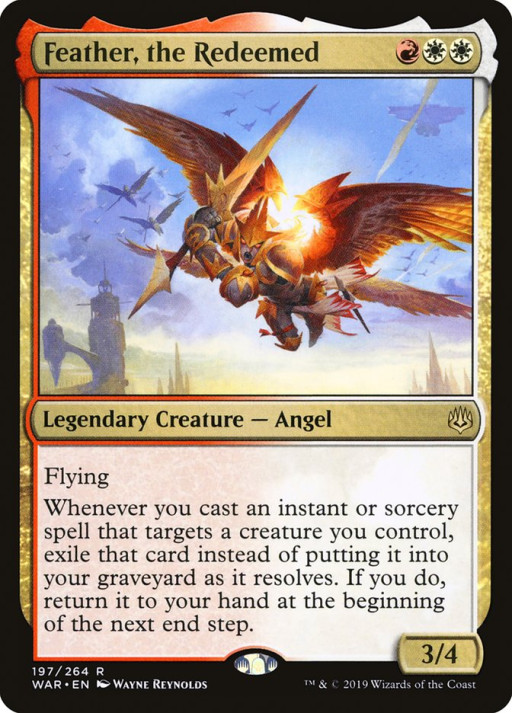
Feather the Redeemed is a remarkable creature that has brought a whole new dimension to red/white aggro decks. Since her release in May’s War of the Spark, she’s quickly become one of the most popular legendary creature cards of all time.
It makes perfect sense, then, that a lightweight heavy-hitter like Feather would have no problem securing a top spot.
What's good about this deck:
- Feather’s whole gimmick, and the thing that makes her so powerful, is that she gets to reuse spells forever that should only normally be used once.
- Feather’s whole gimmick, and the thing that makes her so powerful, is that she gets to reuse spells forever that should only normally be used once.
- All of those cards that buff your creatures then hit the graveyard, your Defiant Strikes, your Gods Willings, and your Gird for Battles, Feather brings this cards back to your hand indefinitely, meaning that you’re getting legitimate card advantage in a color pairing that typically suffers in this department worse than almost any other.
- Because these spells are relatively mana-light, your curve is also pretty light and you can often cast multiple of these buffing spells in one turn cycle.
- Pairing all of this with a few solid support creatures and some general removal/burn means that you’ve got the shell for a nightmare spell slinger deck.
Why this deck is OP:
- Feather, the Redeemed is a 3 mana flying 3/4 with such a massive upside that you’d be extremely lucky to find her ability on an enchantment for the same mana cost.
- This deck can often be easily outputting 10 damage a turn by turn 4, and 16 by turn 5.
- The support creatures available in this deck for Feather’s ability to profit on cover just about every weakness Feather herself may encounter. If flying isn’t enough to get past your enemies, trample should be! If your opponent has a surprise blocker, indestructibility may make all the difference.
How To Play This Deck Effectively:
- Try and save your instants and sorceries that target your creatures for when you’ve got Feather in play.
- You may need to use some of these spells before Feather can recur them for you, if that DOES happen, you’ve always got Dreadhorde Arcanist to help get your hand back on track.
- Spread the love! Feather is fantastic, but Adanto Vanguard’s indestructibility and Dreadhorde Arcanist’s trample make them both wonderful choices to buff using Feather’s recursion.
- Your sideboard in this deck is all about removal. If it turns out that Feather can get strong but just can’t take out your opponents, pop in some extra removal to clear a path for Feather and her friends to get through.
- Gideon Blackblade is in the sideboard here for his versatility as a creature. He’s a remarkable support creature and he’s very hard for your opponents to remove, but if you leave him undefended, he’s as vulnerable on your opponent’s turn as any other planeswalker, so be careful!
Decklist:
- 1 Sheltering Light
- 2 Gird for Battle
- 4 Shock
- 4 Reckless Rage
- 4 Gods Willing
- 4 Defiant Strike
- 3 Legion Warboss
- 4 Feather, the Redeemed
- 4 Tenth District Legionnaire
- 4 Dreadhorde Arcanist
- 4 Adanto Vanguard
- 3 Mountain
- 4 Clifftop Retreat
- 4 Temple of Triumph
- 4 Sacred Foundry
- 7 Plains
Sideboard:
- 1 Baffling End
- 1 Prison Realm
- 4 Demystify
- 2 Fry
- 1 Aurelia, Exemplar of Justice
- 3 Gideon Blackblade
- 3 Lava Coil
4. White Weenies
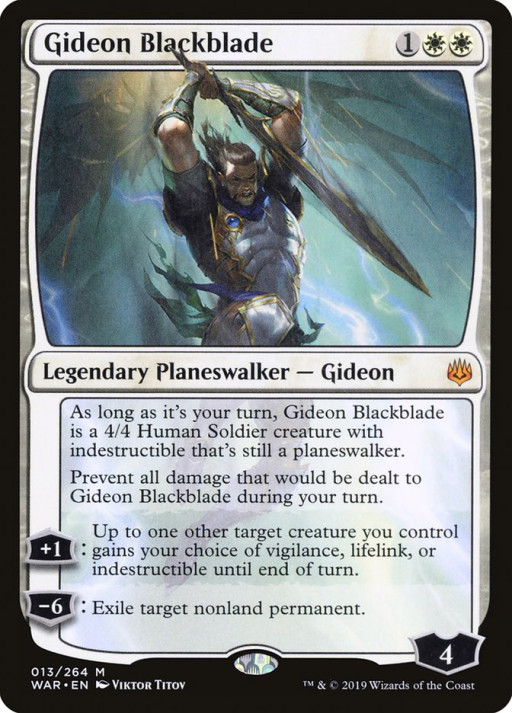
White Weenies, like Mono Green Stompy, is an archetype as old as the game itself. White Weenies is about getting out dozens of small creatures and building an army from their masses.
This deck hasn’t really gotten many huge upgrades in the past year, and most of its power is coming from a overflow of goodies for the archetype that came in Core Set 2019 and Dominara last summer. The printing of Gideon Blackblade in War of the Spark did help the deck’s versatility and consistency quite a bit, however.
What's good about this deck:
- This deck is as easy to play as mono-green: just flood the board!
- Instead of relying on ramp to get out massive creatures, White Weenies prefers a ‘go-wide’ approach. While one soldier may fall, the army will still stand!
- There’s a ton of value in the token generators in this deck. History of Benalia, Legion’s Landing, and more provide you with a ton of soldiers to join your ranks for cheap!
- Vigilance is a common keyword in this deck, meaning that you don’t have to worry about tapping yourself out when you go in for an all out attack.
- Getting permanent buffs from +1/+1 counters help the slow snowballing of your forces from non-existent to world-conquering.
Why this deck is OP:
- This deck is just so damn fast. Anything less than complete board wipes have a hard time keeping up with removal against this deck’s forces.
- While nothing in this deck is particularly impressive or flashy by itself, the synergy between the forces of this deck makes all the difference. The army is more than the sum of its parts.
How To Play This Deck Effectively:
- Your mana base is very simple, just 20 plains, so curving up with the game is never a hassle. Just try to get out your one land a turn until turn 4 or so and you should be good.
- Try to tap all of your mana on every one of your turns. This deck doesn’t have any tricksy instants or sorceries to think about, so your best bet is to just keep pumping out as many creatures and creature support spells as you can.
- Keep an eye on your keywords. Flying, Vigilance, Trample, et cetera. A lot of the creatures in this deck are very different from one another, and not keeping up with the slight distinctions can cost you.
- Your sideboard has Ajani, Adversary of Tyrants. This planeswalker is a bomb in this deck, giving out +1/+1 counters like candy and swarming your board with bodies.
- Ajani is only sideboarded in favor of Gideon blackblade. You can fit both of these cards in your mainboard if you so choose, and it may be worth it to try.
Decklist:
- 4 Venerated Loxodon
- 1 Tomik, Distinguished Advokist
- 4 Snubhorn Sentry
- 4 Skymarcher Aspirant
- 4 Law-Rune Enforcer
- 2 Gideon Blackblade
- 3 Adanto Vanguard
- 4 Benalish Marshal
- 4 Dauntless Bodyguard
- 20 Plains
- 4 Legion's Landing
- 4 History of Benalia
- 2 Conclave Tribunal
Sideboard:
- 3 Demystify
- 1 Mobilized District
- 2 Gideon Blackblade
- 4 Baffling End
- 3 Ajani, Adversary of Tyrants
- 2 Conclave Tribunal
3. Mono Blue Aggro
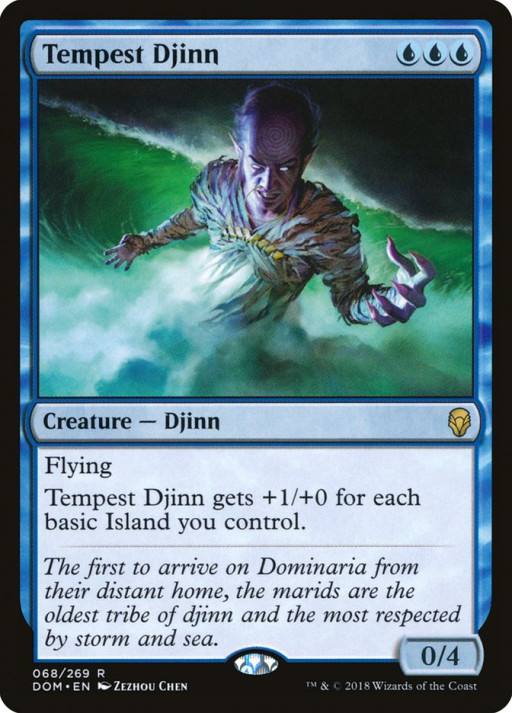
Mono Blue Aggro may seem like a strange archetype to think about. After all, blue seems so quintessentially against the philosophy of aggro.
That is, then, possibly why the deck archetype works so well. A simple deck built around value creatures and maintaining your tempo at any cost, Mono Blue Aggro might just be a match made in hell.
What's good about this deck:
- Unlike most other ‘aggro’ decks, Mono Blue Aggro runs a full tempo and control kit, ensuring that you’re able to manage your opponent’s boardstate and keep card advantage rolling in while getting your forces on the board.
- Every creature in this deck costs 3 mana or less, and most of them only cost 1, meaning that you’re building an aggressive boardstate from the first draw of the game.
- Cheap removal and countermagic give you tons of options to deal with threats.
- A mana base of 20 basic islands leaves this deck as likely the easiest blue deck to build and play, as well as one of the best.
- This deck is incredibly cheap to build, and is built mostly of cards you start with.
Why this deck is OP:
- Tempest Djinn gets stronger for every basic island you have in play, which means that he gets bigger by roughly 1 power a turn every single turn he’s on the board.
- Dive Down acts as an incredibly versatile, catch all piece of protection for any of your primary threats.
- Countermagic has been one of the best types of magic in the game since its inception. Anything that reduces the cost of a counterspell is bound to make a big splash in monoblue, and this deck has 8 cards that are reduced cost counters.
How To Play This Deck Effectively:
- Get out your creatures early and swing hard. This is, after all, an aggro deck!
- It may feel slow to start chipping away with such small creatures, but as you do, keep your opponents at bay with countermagic and removal so your path to attack stays clear.
- When you need them, you’ll almost always have access to spells like Opt that help keep your hand refilled with exactly the kind of cards you need at all times.
- Creatures like Tempest Djinn and Pteramander scale as the game goes on, so don’t underestimate the kind of damage they can do long-term.
- A small, aggressive aura like Curious Obsession would normally not be the best card in a Mono Blue deck, but in Mono Blue Aggro, it does a ton of work in refilling your hand and boosting your damage output. Remember: Curious Obsession can stack with itself!
Decklist:
- 4 Merfolk Trickster
- 2 Pteramander
- 4 Siren Stormtamer
- 4 Spectral Sailor
- 4 Tempest Djinn
- 4 Dive Down
- 2 Lookout's Dispersal
- 1 Negate
- 4 Opt
- 3 Spell Pierce
- 1 Unsummon
- 3 Wizard's Retort
- 4 Curious Obsession
- 20 Island
Sideboard:
- 3 Negate
- 2 Aether Gust
- 3 Cerulean Drake
- 3 Entrancing Melody
- 2 Essence Capture
- 1 Surge Mare
- 1 Tale's End
2. Gruul Midrange
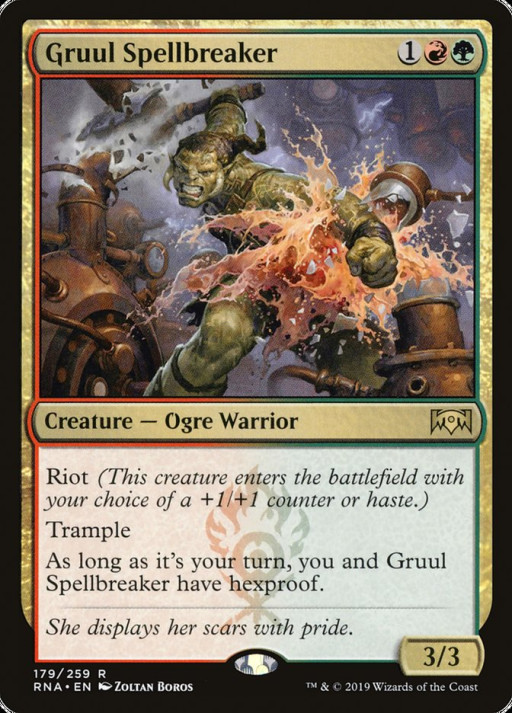
Big scary creatures. Who needs anything else? Gruul Midrange comes out hard and fast and has a ton of contingency options for games 2 and 3.
Pairing the clearly crucial mana-ramp of Green with the aggressive creature bombs of Red gives rise to the ultimate form of the Stompy-style aggro deck.
What's good about this deck:
- Green’s ramping friends the Llanowar Elves and their slower, more versatile cousins the Paradise Druid team up to ramp out any number of this deck’s monstrous creatures as fast as ever.
- Gruul Spellbreaker shuts down many control and spell slinging deck types in their tracks.
- Rhythm of the Wild gives every single one of your creatures a flexible upside on casting and prevents them from being countered.
- Being midrange means that this deck can swap out some of its extra big creatures for answers to particular problems you might encounter in game one. Slot in extra burn or combat evasion for keeping your battlefield in your control, slot in Kraul Harpooner for dealing with flying threats, or slot in Tibalt, Rakish Instigator if you want to watch your enemies painfully try, and fail, to run a lifegain build against your creatures.
Why this deck is OP:
- This deck has the upsides of any creature deck but maximized. Rekindling Phoenix gives you an almost certainly recurring flying threat, Nullhide Ferox gives straight up value, and Ghalta, as always, can end the game the moment he hits the board.
- Ilharg, the Raze-Boar can also end the game on entry, but in a bit flashier of a way than this deck’s other win-conditions. Ilharg takes any of your massive creatures you haven’t been able to ramp up to yet and slings them onto the field attacking for free. Your opponents can never really predict what sorts of beasts you’ll cheat into play with Ilharg, but it’ll probably be Ghalta, right? Yeah, it’ll probably be Ghalta.
- This deck hates instants and sorceries. Not only does it not really run many, but a huge swath of the creatures in the deck are, or provide, hexproof in some way or another. Targeted removal beware, Gruul Midrange is here.
How To Play This Deck Effectively:
- Take advantage of your hexproof! You can’t be targeted by your opponents, making the fight a much more direct encounter, and this deck likes direct encounters.
- Try to get as many creatures on the board as you can. There’s not much strategy to holding creatures back in this deck outside of using them with Ilharg.
- Nullhide Ferox’s ability might seem extreme to not let you play noncreature spells, but assuming you’ve got Rhythm of the Wild in play, there are only three other cards in your deck that are noncreature spells to worry about, and none of those are particularly game-changing either. Don’t sweat it!
- Speaking of those noncreature spells, Nissa, Who Shakes the World is in this deck too. Keep in mind her ability to bolster your ranks with indestructible living lands and her power to double your green mana!
- Jadelight Ranger may seem out of place in this deck, but “Explore” is the best form of card advantage and +1/+1 counter generation available to this archetype, so be sure to take advantage of it.
Decklist:
- 2 Jadelight Ranger
- 4 Llanowar Elves
- 3 Paradise Druid
- 4 Nullhide Ferox
- 2 Ghalta, Primal Hunger
- 2 Rekindling Phoenix
- 2 Ilharg, the Raze-Boar
- 4 Vine Mare
- 4 Gruul Spellbreaker
- 2 Collision/Colossus
- 4 Domri's Ambush
- 4 Rhythm of the Wild
- 2 Nissa, Who Shakes the World
- 8 Forest
- 4 Rootbound Crag
- 6 Mountain
- 4 Stomping Ground
Sideboard:
- 3 Fiery Cannonade
- 1 Legion Warboss
- 2 Blinding Fog
- 4 Lava Coil
- 1 Tibalt, Rakish Instigator
- 2 Thrashing Brontodon
- 2 Kraul Harpooner
1. RDW
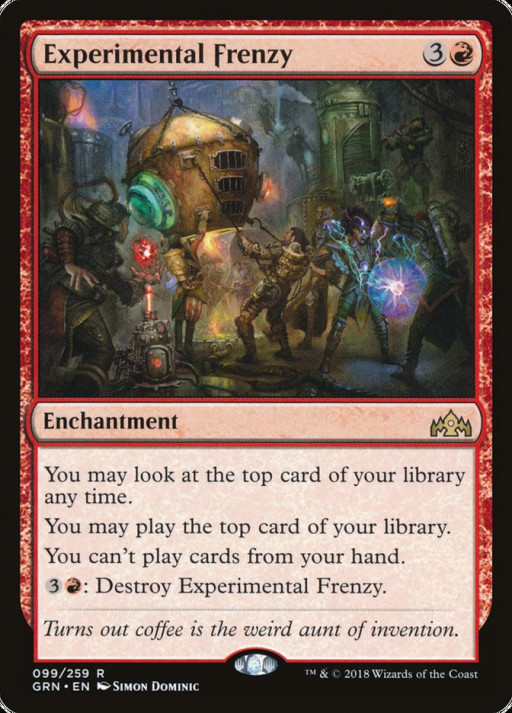
RDW, or Red Deck Wins, is one of those ancient and battle-tested archetypes from the oldest ages of the game’s history. RDW is about throwing out as many cheap and aggressive spells as you can as quickly as you can and get as much value for them as you can.
Basically, you wouldn’t be wrong to call it Mono Red Aggro. Throughout the history of the game, RDW has had its ups and its downs, but none of the other evergreen archetypes have had quite the same staying power as RDW.
Maybe it’s because it’s arguably the easiest deck to learn in the history of the game? Maybe it’s because it’s arguably the most powerful? Maybe both.
What's good about this deck:
- It’s cheap.
- It’s easy to learn.
- It’s lightning fast.
- It’s incredibly satisfying.
- It’s called “Red Deck Wins” for a reason.
Why this deck is OP:
- Experimental Frenzy puts your hand behind a locked door and says that you may only play the top card of your library as long as it remains in play. This may seem like a bad thing at first, but for RDW, this card effectively translates to “Your hand is as deep as you can afford to cast. How far can you go?”
- Loaded up with Lightning Strikes and other burns, Goblin Chainwhirlers to keep the board clean, and Light up the Stage and Chandra, Fire Artisan to control what cards you’re able to use when Experimental Frenzy is out and in play, RDW can tear through it’s topdeck and output ridiculous levels of raw damage.
- To help fuel your enterprise of ripping through your own deck, Runaway Steam-Kin gives you 3 red mana for every 3 red spells you cast, effectively letting you cast twice as much each turn and enabling a devastating turn 4 kill if you draw the right burns.
How To Play This Deck Effectively:
- Despite the low curve, mana is important in this deck. Don’t let yourself get choked out. If you’ve got less than 3 mana in your opening hand, you should seriously consider a mulligan.
- Do not hold back your burns, or anything for that matter. It can be enticing to hold them all in hand and wait to sweep through your opponent in one big blaze of glory, but you need to be using as much of your mana and as many of your cards as you can each turn in order to be efficiently burning through your opponent.
- Your creatures are as important as your burns. They may not seem as flashy, but each one of them serves a vital function in helping you turn up the heat and melt through your opponents as quickly as possible.
- Tibalt, Rakish Instigator makes a wonderful sideboard addition in this deck against any matchup where someone tries to use lifegain to outlast your burns.
- For creature heavy matchups, try sideboarding in Legion Warboss and Lava Coil. They sacrifice some of your more direct burn power in order to give you a bit more blocking fodder and creature-hate.
Decklist:
- 4 Ghitu Lavarunner
- 4 Fanatical Firebrand
- 1 Chandra, Fire Artisan
- 4 Goblin Chainwhirler
- 4 Runaway Steam-Kin
- 4 Viashino Pyromancer
- 4 Light Up the Stage
- 4 Lightning Strike
- 4 Shock
- 3 Wizard's Lightning
- 4 Experimental Frenzy
- 20 Mountain
Sideboard:
- 1 Chandra, Fire Artisan
- 3 Chandra, Acolyte of Flame
- 3 Dire Fleet Daredevil
- 1 Fry
- 4 Lava Coil
- 1 Legion Warboss
- 2 Tibalt, Rakish Instigator
You may also be interested in:

